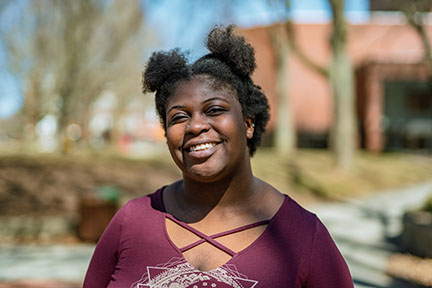I went to see Goshen’s production of “Bright Star” this past weekend. As usual, the theater department put on a fantastic performance and the singing was simply amazing. However, this production felt as isolating as they all have during my three years at Goshen College.
I am not a singer or an actress. I’ve never participated in school plays. It didn’t take me long as a young, black kid to realize that theater wasn’t meant for me—it isn’t meant for those of us with dark skin at all.I recognize that the department can’t guarantee enough people of color to warrant a more diverse play or musical. This isn’t meant to be an attack but to convey my deepest frustration with higher education. I want to point out that, during my years at Goshen, the school has not chosen productions that people of color, particularly dark-skinned people of color, can participate in.
In my time here, Goshen mainstage productions have included “Kindertransport,” “Mother Hicks,” “Crimes of the Heart” and “Bright Star.” All of these productions take place in a time where segregation is alive and well. Many take place in the American South—a particularly contentious location for people of color.
These productions beg for a certain type of cast: specifically, an all-white one.
While “Bright Star” did cast students of color, they were ones light enough to “pass” as white characters. Jokes about the old South, the time period and references to Chapel Hill—a college that wasn’t desegregated until the 1950s—make it clear that these characters are white.
This actually makes the casting of a person of color as Young Alice that more problematic. In the “present” time (a progressive 1940s), Alice is played by a white actress. In doing so, the theater department admits that the only people of color allowed in the production are ones that “pass” as white characters.
Goshen College’s demographics are changing and yet the theater department attracts a mostly white audience. Why go to a musical when its audience clearly isn’t meant to be you?
I like to play this game at theater (and other GC events) that I’ve dubbed “Spot the Minority.” This past weekend, “Bright Star” had at least twenty out of a full house, if you’re counting the people on the stage. It is sort of a morbid game to play—counting how out of place you are. But it speaks to a broader issue.
That issue is higher education and its slow realization that, when advocating for a more diverse community, you’ll actually have to alter or change the way things are done.
I know that Goshen is in a transition, but popular programs like the theater department seem to still be catching up. Let’s say that the theater department’s biggest audience is comprised of 1960s Goshen College graduates. Maybe it doesn’t need to be stated, but Goshen’s 1960 graduating class is going to look a lot different than 2020’s graduating class.
Each class is changing, becoming more and more diverse in terms of religion, race and gender. Institutions of higher education, Goshen included, are poorly equipped to deal with these new demographics.
In addition to the normal stress that all college students face (which is a lot, believe me), students of color can deal with a whole slew of additional issues.
We may face racial slurs or struggle to avoid stereotypes. Some of us are DACA recipients. Many of us struggle to fit into traditionally white institutions. It’s an isolating experience.
Students of color report higher rates of emotional distress within their first year of college than their white peers, and yet they are less likely to seek out help.
Roughly 40 percent of college and university students identify as racial minorities, and Goshen College claims 41 percent of students are students of color.
At the national level, less than 25 percent of faculty members are people of color— Goshen falls far under that number. We don’t have nearly enough role models and, although we have advocates among the staff, how could white staff ever fully understand the complexities of being a student of color at a predominantly white institution?
I understand that Goshen wishes to shift away from its perception as a white institution, but until it works to address the struggles of students of color by changing the approach in various programs, teaching styles and/or content and the faculty, it remains a white institution.
I often wonder how the theater department doesn’t realize their productions display a single story—the white story. And I realized, with few students of color involved in theater and all white professors, that they don’t have to think about it. They don’t have to think about it at all.
And even if they do think about it, they certainly don’t have to act on it. I want to stress that the production was amazing, but who gets the opportunity to be a part of the experience?
“Bright Star” was beautiful. Beautiful acting, beautiful voice, and beautifully white.


